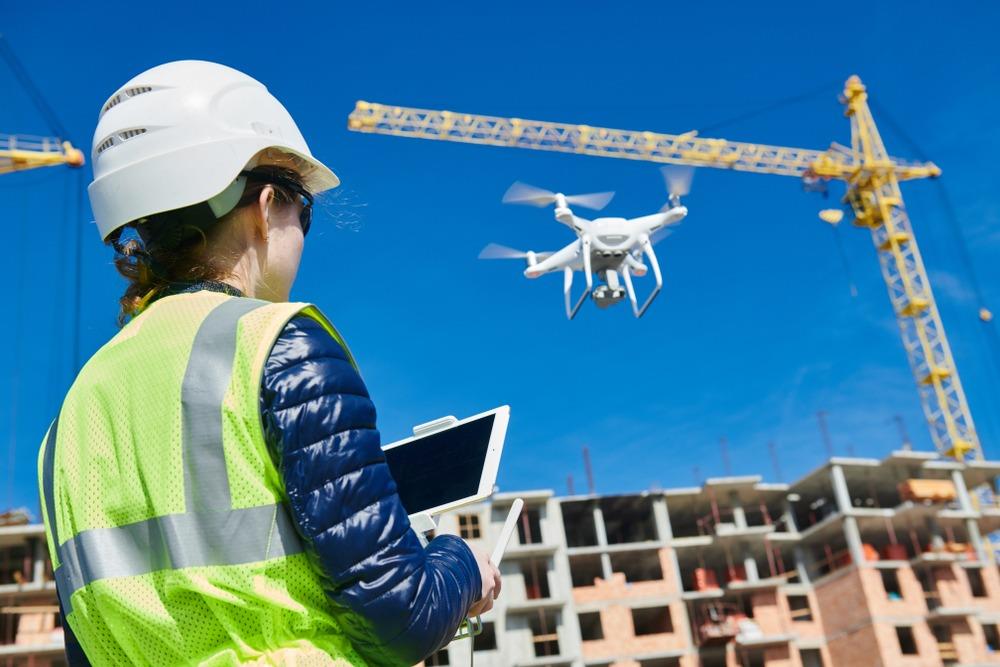Surveying has always been an indispensable element of segments like agriculture, mining, urban planning, irrigation and infrastructure development. When commercial drones were first hosted, the geospatial industry instantaneously incorporated them. These drones had cutting-edge technology, diverse varieties of sensors and also high-resolution cameras. Surveyors and GIS specialists saw pronounced potential in them and began using them as flying data collection devices. This resulted in a comparison between drone surveys vs. traditional survey approaches.
What is drone survey technique?
A drone survey is a technique that is used to gatheradequate data for profound analysis and persistent decision making with the assistance of drone technology. As the usage of drone survey in India is becoming more popular in diverse segments, the old-style survey methods are less engaged now. We named drone survey India as a disruptive technology. Disruptive technology or disruptive revolution is the one that transforms the way a specific service was used in preceding years. The end outcomes accomplished via this disruptive technology are more cost-effective in terms of moneys, security and time. Drones have become a go-to alternative for maximum of the surveyors owing to the massive advantages they offer. The speedy growth of drone technology specifies its market demand and worth in lots of subdivisions of the business.
How drone survey changes traditional way of surveying?
Drone technology is becoming a common device in any surveyor or site administrator’s toolkit. It is marshaling in a novel era for topographic surveying by permitting the capture of comprehensive site maps, comprising of contours, and terrain, for a fraction of the time and cost of old-style approaches. Drone survey India or aerial survey India offers colossal potential to GIS specialists. With a drone, it is conceivable to perform topographic surveys of the same quality as the exceedingly precise measurements gathered by outmoded approaches, but in a fraction of the time. This significantly decreases the cost of a site survey and the workload of professionals in the arena.
Easy and legitimate: drone surveying is now within everybody’s grasp

Government controllers are making it easier to get licensed to fly a drone for commercial usage. And drones’ snowballing affordability means completing of a survey in less than an hour can be the standard. Data turnaround ensues in 24 hours. Drone data is already being used in lots of land development schemes. From the initial stages of planning and designing land portions, through to preconstruction valuations, it is also facilitating progress tracking and final as-builts. Civil contractors say that drone-captured data, when used with ground control systems and processing software offers a faster, easier, and safer way to create digital terrain models and aerial site maps than preceding approaches.
Map the unreachable areas
An aerial mapping drone can lift off and fly virtually everywhere. You are no longer restricted by inaccessible areas, dangerous steep slopes or harsh terrain inappropriate for old-style measuring tools. You do not need to shut down highways or train pathways. In fact, you can gather data during operation without an administrative overhead.
Improved insights from rich, visual datasets
Unlike customary topographic survey data—which is essentially a set of line work— drone surveys consist of an orthophoto, digital terrain model, contour map and dense point cloud. The outcome is an exceedingly precise, visual dataset all set for analysis.
Simple tools give everybody the power to map, measure and analyze
With easy-to-use tools to gauge and annotate datasets, stockpile bulks can be precisely measured in under a minute and tow road grades can be measured in seconds. Using a surface-to-surface contrast, location terrain can be viewed against design to see where material should to be added or taken away. Timeline sliders make it easy to visually track variations in particular areas, or across the whole site, to make certain everything is on target for fruitful completion. Overlaying boundary line work over an orthophoto permits to check that the construction works stay within the demarcated region and avoid legal disputes. High-resolution orthophotos permit surveyors to implement highly-accurate distance and surface measurements.
Urban planning
The development of progressively impenetrable and complex urban regions necessitates intensive planning and consequently time-consuming and costly data collection. Thanks to drones, urban developers can gather enormous amounts of the latest data in a short period of time and with far less staff. The pictures made in this way permit planners to inspect the prevailing social and environmental situations of the locations and contemplate the influence of diverse situations.

